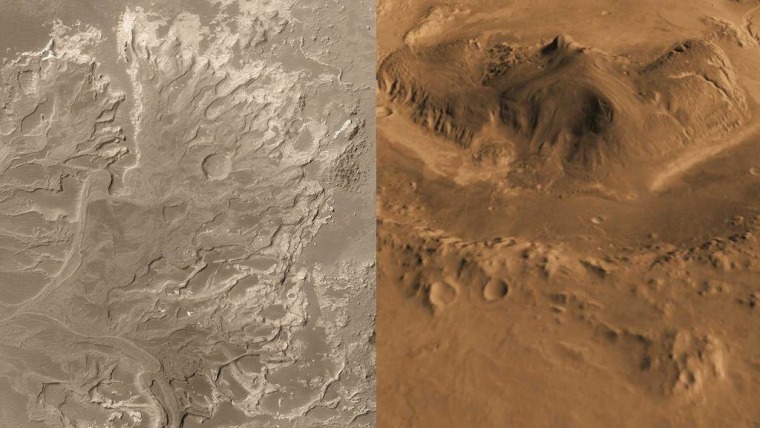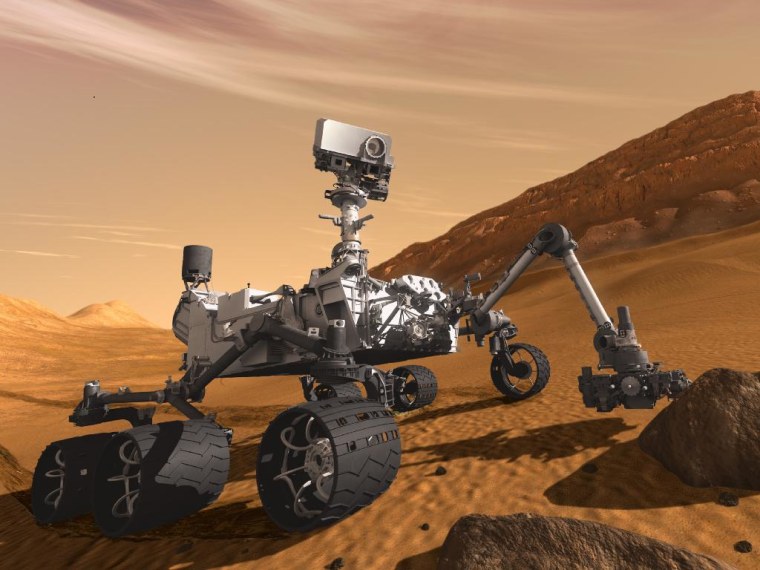After years of deliberation, NASA says it will announce the destination for its next Mars rover on Friday at the Smithsonian Institution's National Air and Space Museum.
Earlier this month, the choice was whittled down to two: NASA said the Curiosity rover, also known as the Mars Science Laboratory, would be launched either to Eberswalde Crater or Gale Crater. Today's announcement signals that a decision has been made.
Curiosity is already at NASA's Kennedy Space Center, undergoing final preparations for launch as early as Nov. 25, the day after Thanksgiving. The car-sized rover is scheduled to arrive at Mars in August 2012 to begin a primary scientific mission scheduled to last at least one Martian year, or roughly two Earth years.
Among the questions the $2.5 billion mission could answer: Were there areas on the Red Planet that could have been favorable for supporting microbial life? Could "molecular fossils" preserve the evidence of such life? Past missions have turned up evidence that ancient Mars was warmer and wetter than it is today, but how long did those life-friendly conditions last?

Both Eberswalde and Gale are places where scientists believe water once flowed. Eberswalde contains the remains of an ancient delta with clay-like minerals called phyllosilicates, which tend to form during long-term contact with water.
Gale features a 3-mile-high mound with layers of phyllosilicates toward the bottom and sulfates higher up the slope. The sulfates are thought to have formed in more acidic water — which suggests that Gale might preserve a billion-year stretch of Mars' geological history. Curiosity would have to climb up the slope to document that history fully, which makes Gale a somewhat riskier destination.
Care to hazard a guess as to where Curiosity will go? Cast your vote, or discuss your druthers in the comment section below. Then tune in at 10 a.m. ET Friday to learn more about NASA's next Martian adventure.

More about Mars:
- Slideshow: Mars rover preps for duty
- How a long mission to Mars could kill you
- Cosmic Log archive for posts about Mars
- Mars resource page at msnbc.com
Connect with the Cosmic Log community by "liking" the log's Facebook page or following @b0yle on Twitter. You can also add me to your Google+ circle, and check out "The Case for Pluto," my book about the controversial dwarf planet and the search for new worlds.
